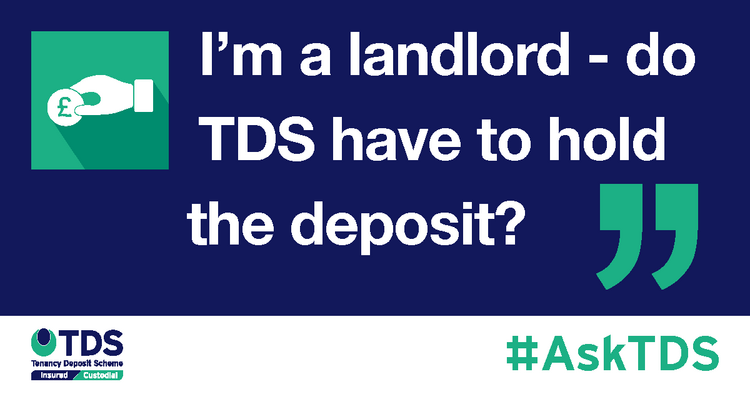
This article has been written in response to a landlord’s query: “I’m a landlord – do TDS have to hold the deposit?”
Tenancy deposit protection legislation has been in place in England and Wales since April 2007, although TDS was formed before this in 2003 offering a voluntary scheme for letting agents to register tenancy deposits. From the commencement of deposit protection legislation, landlords and agents had two options in how to comply with the legislation and protect tenancy deposits; hold the money themselves and register the deposit with a tenancy deposit scheme or lodge the deposit money with their scheme. In both instances, landlords must comply with the second aspect of the deposit protection legislation by serving key documents to tenants including Prescribed Information and the Scheme Leaflet. With both TDS insured and TDS Custodial, once the deposit has either been registered or lodged a certificate is produced as proof that the deposit has been protected. This certificate is commonly used as a receipt to prove a deposit has been protected and can be provided to all parties involved in the tenancy.
If a landlord wishes to hold the deposit themselves, they can join the TDS Insured Scheme. There is no joining fee and the only requirements are that the landlord is the property owner and the money is held in a UK bank account. Landlords ‘pay as they go’ for each tenancy protected. If a tenancy is registered on a fixed term contract and later becomes periodic, there is no additional charge and the deposit is protected for the lifetime of the tenancy. When the tenancy comes to an end, the landlord can independently discuss any proposed deductions with the tenant and return the agreed amount. For landlords who are members of the RLA, there is DepositGuard which offers discounted Insured deposit protection for RLA members.
If a landlord would prefer their deposit scheme to hold the deposit, they can join the TDS Custodial Scheme. The Custodial scheme is completely free both to join and lodge a deposit, there are also no membership requirements. A landlord can create a membership and commence lodging deposits immediately. As tenancies come to an end, the landlord or the tenant can engage with TDS to advise that the tenancy has ended and how the deposit should be repaid. Once the parties agree, TDS pays out the deposit within 5 working days.
Whether you decide to use TDS Insured or TDS Custodial, both offer a free adjudication service where agents, landlords and tenants can all raise a dispute if the parties are unable to reach an agreement as to the return of the deposit. Our adjudication service comprises of a powerful online dispute portal allowing parties to upload evidence and easily review what’s been submitted. TDS has also produced a Deductions Template to help you to independently reach a resolution if deductions are to be made as well as providing guidance when setting out a claim should a dispute be raised with TDS.
Tenancy Deposit Scheme (TDS) is a government approved scheme for the protection of tenancy deposits; TDS offers both Insured and Custodial protection and also provides fair adjudication for disputes that arise over the tenancy deposits that we protect.
We provide invaluable training in tenancy deposit protection and disputes for agents and landlords through the TDS Academy as well as joining with MOL to provide the Technical Award in Residential Tenancy Deposits.
TDS Insured Scheme: where a TDS member can hold the tenancy deposits as stakeholder during the term of the tenancy.
TDS Custodial Scheme: where TDS hold the deposit for the duration of the tenancy.
TDS Academy: TDS provides property professionals with invaluable training in tenancy deposit protection and tenancy deposit disputes.
TDS can only comment on the process for our scheme, other deposit protection schemes may have a different process/require different steps. Content is correct at the time of writing.